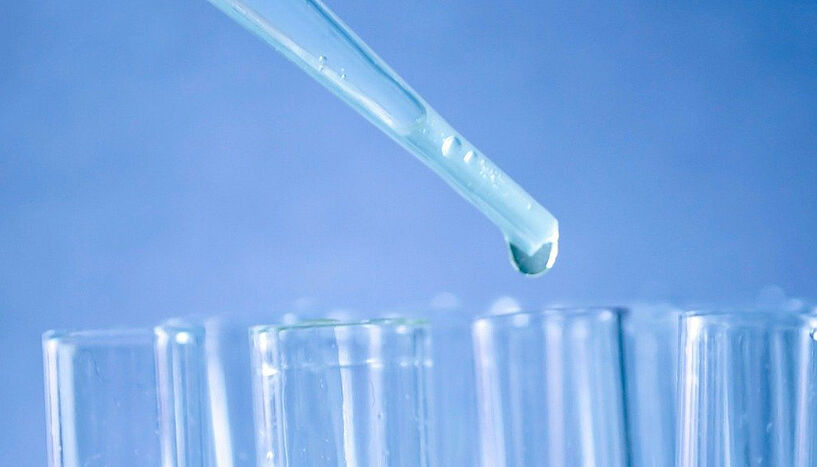The therapeutic potential of peptides
09. Februar 2021
Success in the development of peptide compounds and newly discovered therapeutic agents in animal poisons contribute to the rise of peptide drugs. (© Free Pics / Pixabay)
Animal venoms as natural resource for new drugs
Currently there are more than 80 peptide drugs on the global market and about twice as many in clinical development. Due to their beneficial properties, these biomolecules play already an important role in the treatment of diseases such as diabetes, cancer, hormone disorders, HIV infection, and multiple sclerosis. In the recent issue of "Nature Reviews Drug Discovery", a team of Austrian and Australian scientists led by medicinal chemist Markus Muttenthaler of the University of Vienna present an outlook on the latest trends in peptide drug discovery and development.
"Insulin is a prime example for a successful peptide drug that has been essential for the health of millions of diabetic patients in the past 100 years," says Markus Muttenthaler, who leads research groups at the Institute of Biological Chemistry of the Faculty of Chemistry at University in Vienna as well as at the Institute for Molecular Bioscience, at the University of Queensland in Brisbane.
Worldwide, peptide therapeutics account for 5% of the global pharmaceutical market, with global sales exceeding US$ 50 billion. More than 150 peptides are in clinical development and another 400-600 peptides undergoing preclinical studies.
Peptide drugs have a distinct space in the pharmaceutical landscape. They are smaller than small molecule drugs, which hold the largest share of therapeutics on the market, and larger than genetically produced biologics such as antibodies. Compared to small molecules, peptides are often more potent and selective, and thus have fewer side effects; compared to antibodies, their production is more economic and they have certain advantages in cancer research, e.g. they can penetrate (tumour) tissue more easily. However, 90% of peptide drugs need to be injected, since the digestive system breaks them down rapidly when taken orally.
Vast peptide libraries
According to the corresponding authors, Assoc. Prof. Markus Muttenthaler and his Australian colleague, Prof. Paul F. Alewood, the increased interest in peptide drugs demands "efficient strategies for the discovery of therapeutic leads". A key trend in peptide drug discovery is the establishment and directed evolution of vast peptide libraries based on latest display technologies, a concept that has been recognised with the Nobel Prize in Chemistry in 2018.
The systematic exploration of animal venoms is another key trend that drives peptide drug discovery, and "allows us to take advantage of the vast natural and over millions of years evolutionary-selected peptide libraries for therapeutic lead discovery", says Muttenthaler, who is very active in this space.
New insights
In a recent study, Muttenthaler’s team chemically conjugated a spider-venom peptide with a scorpion-venom peptide. Both substances use different mechanisms to block an ion channel that plays an important role in pain signalling. "Linking the two different binding mechanisms resulted in irreversible blockage of the ion channel, and the concept might be useful for prolonged pain relief," says Muttenthaler.
In a second study, his team, together with Christophe Duplais' group in French Guyana, analysed the venom of the Brazilian ant species, Pseudomyrmex penetrator, and synthesised and characterised the most active component. The potent paralytic effect of the isolated venom peptide against plant pests could serve as a promising lead for environmentally friendly and less hazardous biopesticides.
Identifying the right space within the drug landscape
Peptides are signalling molecules of life that control many physiological functions: "When investigating natural products and complex antibiotics such as vancomycin, it can often take years to establish a chemical synthesis; newly discovered peptide compounds, however, can be synthesised in days, which greatly accelerates the research and development of new peptide therapeutics", Muttenthaler explains. "It is however crucial to identify the right pharmacological space where your peptide drug can outperform small molecule drugs or biologics."
Publication in "Nature Reviews Drug Discovery":
Trends in peptide drug discovery, by Markus Muttenthaler, Glenn F. King, David J. Adams, and Paul F. Alewood, in: Nature Reviews Drug Discovery 2021, DOI:10.1038/s41573-020-00135-8
Two for the price of one: heterobivalent ligand design targeting two binding sites on voltage-gated sodium channels slows ligand dissociation and enhances potency, by Alicia Peschel, Fernanda C. Cardoso, Andrew A. Walker, Thomas Durek, M. Rhia L. Stone, Nayara Braga Emidio, Philip E. Dawson, Markus Muttenthaler, and Glenn F. King, J. Med. Chem. 2020, 63, 21, 12773–12785, October 20, 2020, DOI:
Heterodimeric insecticidal peptide provides new insights into the molecular and functional diversity of ant venoms, by Axel Touchard, Helen C. Mendel, Isabelle Boulogne, Volker Herzig, Nayara Braga Emidio, Glenn F. King, Mathilde Triquigneaux, Lucie Jaquillard, Rémy Beroud, Michel De Waard, Olivier Delalande, Alain Dejean, Markus Muttenthaler, and Christophe Duplais, CS Pharmacol. Transl. Sci. 2020, October 6, 2020, doi.org/10.1021/acsptsci.0c00119
Wissenschaftlicher Kontakt
Assoz.-Prof. Dipl.-Ing. Markus Muttenthaler
Institut für Biologische ChemieUniversität Wien
1090 - Wien, Währinger Straße 38
+43-1-4277-705 15
markus.muttenthaler@univie.ac.at
Rückfragehinweis
Pia Gärtner, MA
Pressebüro der Universität WienUniversität Wien
1010 - Wien, Universitätsring 1
+43-1-4277-17541
pia.gaertner@univie.ac.at
